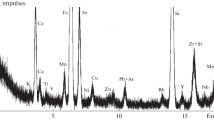The particularities of the formation of the potential biological danger of actinides and fission products in time and the influence of the migration factor on it are examined. The calculation of the dose characteristics of long-lived radionuclides took account of the effect of internal and external irradiation on humans. The internal irradiation dose was calculated taking account of the transfer of radionuclides from soil into food products. It was found that the actinides, 90Sr and 137C, make the main contribution to the biological danger for 500 years, and are followed by americium and 99Tc from the fission products. The separation of 99% of the americium and technetium (which can be transmuted) from the irradiated fuel is optimal for satisfying the principle of radiation equivalence. The use of nitride fuel in fast reactors requires special attention to isolation of 14C from the environment. It was shown that taking account of the presence of agricultural lands in the action zone of enterprises in the pilot demonstration power complex softens the requirements of admissible carbon emission in the gas phase with absolute satisfaction of the safety requirements for the effect on the general public.
Similar content being viewed by others
References
E. O. Adamov and I. Kh. Ganev, Ecologically Flawless Nuclear Power, NIKIET, Moscow (2007).
E. O. Adamov, I. Kh. Ganev, A. V. Lopatkin, et al., “Proximity to radiation equivalence of high-level wastes and natural uranium in the nuclear-power fuel cycle in Russia,” At. Énerg., 81, No. 6, 403–409 (1996).
E. O. Adamov, I. Kh. Ganev, A. V. Lopatkin, et al., Management of High-Level Wastes in the Development, Operation, and Decommissioning of Large-Scale Nuclear Power in Russia, Preprint NIKIET ET-97/35 (1997).
E. O. Adamov, B. A. Gabaraev, I. Kh. Ganev, et al., Potential Development and Possibility of Attaining Radiation Equivalence of Uranium and Wastes in Development Scenarios of Long-Term Nuclear Power, Preprint NIKIET ET-04/68 (2004).
A. V. Lopatkin, Fuel Cycle of Large-Scale Nuclear Power of Russia Based on the Principles of Fuel and Radiation Balance and Nonproliferation: Auth. Abstr. Dissert. Doct. Techn. Sci., NIKIET, Moscow (2013).
E. V. Spirin, S. I. Spiridonov, R. M. Aleksakhin, and S. S. Utkin, “Radioecological assessment of uranium deposits for validation of radiation-migration balance of long-lived wastes,” At. Énerg., 114, No. 1, 34–39 (2013).
E. V. Spirin, G. N. Vlaskin, R. M. Aleksakhin, and S. S. Utkin, “Radiation balance of spent nuclear fuel for fast reactors and natural uranium,” At. Énerg., 119, No. 2, 114–119 (2015).
Protection of the Environment: Concept and Use of Reference Animals and Plants, ICRP Publication 108 [Russian translation], Akadem-Print, Moscow (2013).
V. P. Rublevskii, S. P. Golenetskii, and G. S. Kirdin, Radioactive Carbon in the Biosphere, A. D. Turkin (ed.), Atomizdat, Moscow (1979).
Method of Developing and Establishing Norms for Maximum Admissible Emissions of Radioactive Substances in Atmospheric Air, Rosenergoatomizdat, Moscow (2013).
Generic Models for Use in Assessing the Impact of Discharges of Radioactive Substances to the Environment, Safety Rep. Ser. No. 19, IAEA, Vienna (2001).
E. N. Teverovskii and I. A. Ternovskii (eds.), Admissible Emissions of Radioactive and Harmful Chemical Substances in the Atmospheric Boundary Layer, Atomizdat, Moscow (1980).
Author information
Authors and Affiliations
Additional information
Translated from Atomnaya Énergiya, Vol. 120, No. 6, pp. 312–318, June, 2016.
Rights and permissions
About this article
Cite this article
Aleksakhin, R.M., Spirin, E.V., Solomatin, V.M. et al. Environmental Aspects of a Pilot Power Complex in Project Breakthrough. At Energy 120, 380–387 (2016). https://doi.org/10.1007/s10512-016-0146-3
Published:
Issue Date:
DOI: https://doi.org/10.1007/s10512-016-0146-3



